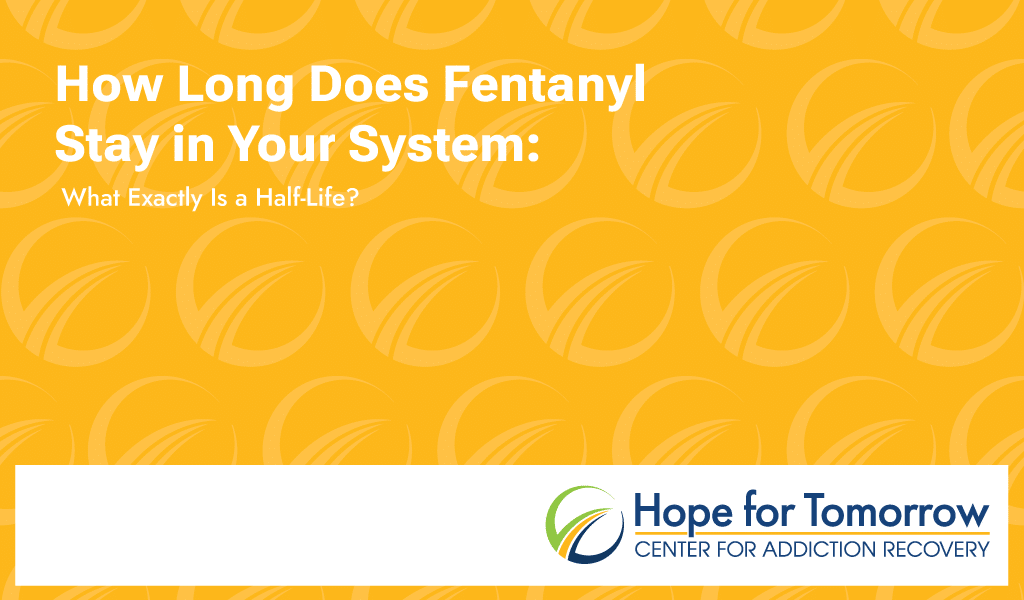

Around 15,000 West Virginians had an opioid use disorder in 2019. Opioid use disorder looks different for everyone. Some people lose their jobs due to substance use while others continue to work, many of them under the constant fear of being drug tested.
One of the most common opioids people take now, intentionally or otherwise, is fentanyl. Hope for Tomorrow works to help people get fentanyl out of their system through our detox program every day, but what about people who aren’t in a detox program? How long does fentanyl stay in your system, and how long can it be detected? Fentanyl detection time is a concern for many people with fentanyl use disorder, and we’ll cover it today in this blog.
Fentanyl is most commonly absorbed intravenously, intramuscularly, or through patches on the skin. It can also be used orally, such as in a lozenge or pill. While fentanyl can be absorbed through the skin, it takes constant exposure for at least multiple hours. While you shouldn’t touch fentanyl, you won’t absorb it or overdose on it if you do.
Fentanyl’s effects don’t last for long, but traces of the substance linger in your body for longer. Exactly how long depends on multiple factors unique to each person.
How often you use fentanyl, how much fentanyl you use, and how long you’ve used fentanyl impacts how long it will stay in your system. So does your metabolism and your overall health, especially of your liver and kidneys.

Fentanyl detection time also varies based on the test you use. Let’s take a look at the most common ones.
Blood tests are useful for quick detection. You can detect fentanyl in the body within minutes of the last dose, but it’s only detectable for around 12 hours and isn’t as reliable as a urine test.
Urine tests can detect fentanyl around an hour after ingesting it, and anywhere from 24 to 72 hours after. How hydrated you are, as well as your metabolism, can influence how your urine test works.
Fentanyl is detected for the longest time in the hair. The substance can be found in hair for up to 90 days. It takes a while for fentanyl to show up in your hair, though, so it’s useful to identify long-term use. One of the other tests is more appropriate if you need to quickly identify the substance in someone’s system.
Ultimately, you can’t. You have to let fentanyl run its natural course through your body, and nothing you do can make that process pass faster.
Fentanyl is an incredibly dangerous substance, and if you take too much of it, you’ll overdose. Overdosing doesn’t necessarily mean you’ll lose your life, but without quick medical attention, you will. Non-fatal overdoses can also cause brain damage due to a lack of oxygen to your brain.
Naloxone is a life-saving intervention that anyone can find over the counter at most pharmacies. If you believe someone is experiencing an overdose, administer naloxone, and call for medical attention immediately. Naloxone alone is rarely enough to reverse an overdose for good. Even if the person isn’t overdosing, using naloxone won’t hurt them, so it’s always better to be safe.
Look out for these signs of a fentanyl overdose:

Are you using fentanyl illicitly? If you’re on this page, you probably know how stressful it is to try to balance using fentanyl, avoiding fentanyl withdrawals, and dodging surprise drug tests. It’s unpredictable, and if it feels like your life is out of your control, you aren’t alone. Plenty of people live with fentanyl use disorder, and many have gotten treatment, and now live rewarding lives without fear. Fentanyl addiction treatment is available for you, too, and today is a great day to get help.
Hope for Tomorrow’s doors are open for you and everyone else in need, including veterans, pregnant women, and people with additional medical conditions. No matter who you are, your story is valuable, and so is your recovery. We’d love to help you take the first step on that
journey, and walk alongside you as you find healing. Contact us at 877-679-8162 today to get started.
Treatment today for a brighter tomorrow.